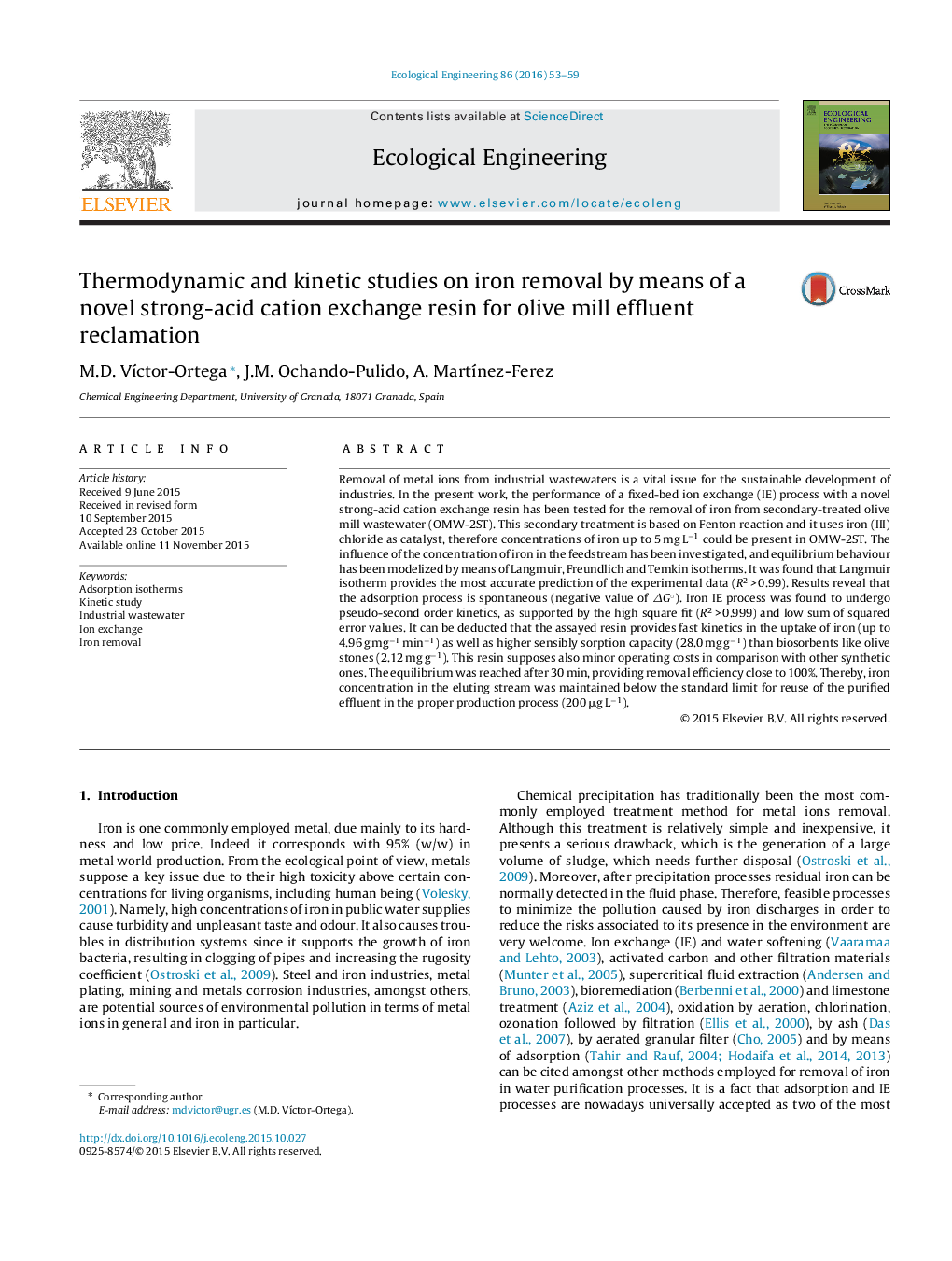| کد مقاله | کد نشریه | سال انتشار | مقاله انگلیسی | نسخه تمام متن |
|---|---|---|---|---|
| 4388914 | 1618013 | 2016 | 7 صفحه PDF | دانلود رایگان |
• Adsorption of iron on Dowex Marathon C strong-acid cation exchange resin was studied.
• The equilibrium behaviour of iron was accurately predicted by Langmuir isotherm.
• Removal efficiency was above 96% for an initial level range between 0.5 and 5 mg L−1.
• Pseudo-second order model describes with utmost accuracy the adsorption of iron.
• Final iron concentration was lower than limits for reuse of the purified effluent.
Removal of metal ions from industrial wastewaters is a vital issue for the sustainable development of industries. In the present work, the performance of a fixed-bed ion exchange (IE) process with a novel strong-acid cation exchange resin has been tested for the removal of iron from secondary-treated olive mill wastewater (OMW-2ST). This secondary treatment is based on Fenton reaction and it uses iron (III) chloride as catalyst, therefore concentrations of iron up to 5 mg L−1 could be present in OMW-2ST. The influence of the concentration of iron in the feedstream has been investigated, and equilibrium behaviour has been modelized by means of Langmuir, Freundlich and Temkin isotherms. It was found that Langmuir isotherm provides the most accurate prediction of the experimental data (R2 > 0.99). Results reveal that the adsorption process is spontaneous (negative value of ΔG°). Iron IE process was found to undergo pseudo-second order kinetics, as supported by the high square fit (R2 > 0.999) and low sum of squared error values. It can be deducted that the assayed resin provides fast kinetics in the uptake of iron (up to 4.96 g mg−1 min−1) as well as higher sensibly sorption capacity (28.0 mg g−1) than biosorbents like olive stones (2.12 mg g−1). This resin supposes also minor operating costs in comparison with other synthetic ones. The equilibrium was reached after 30 min, providing removal efficiency close to 100%. Thereby, iron concentration in the eluting stream was maintained below the standard limit for reuse of the purified effluent in the proper production process (200 μg L−1).
Journal: Ecological Engineering - Volume 86, January 2016, Pages 53–59
